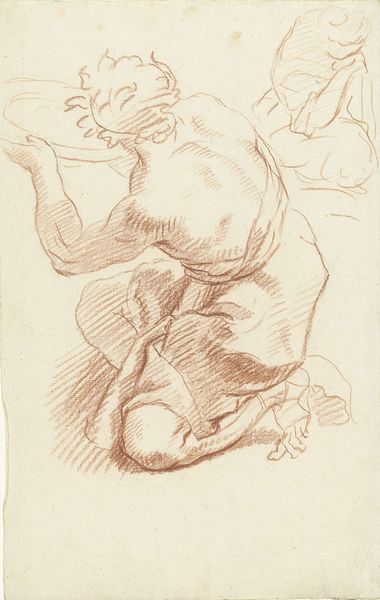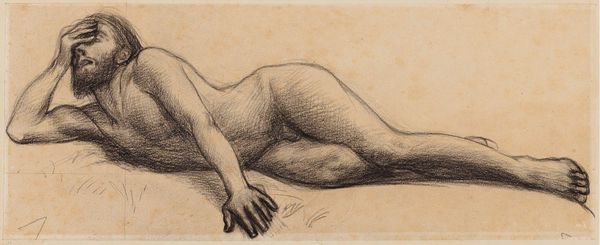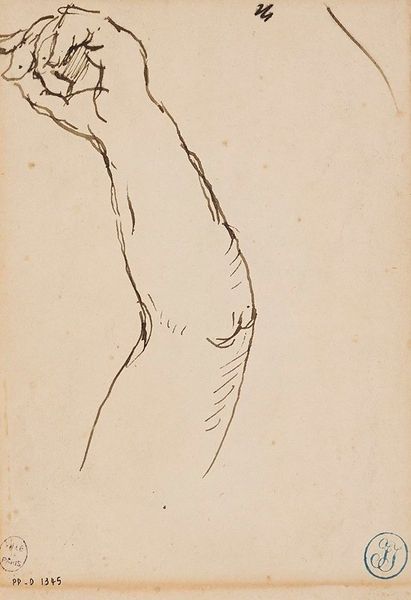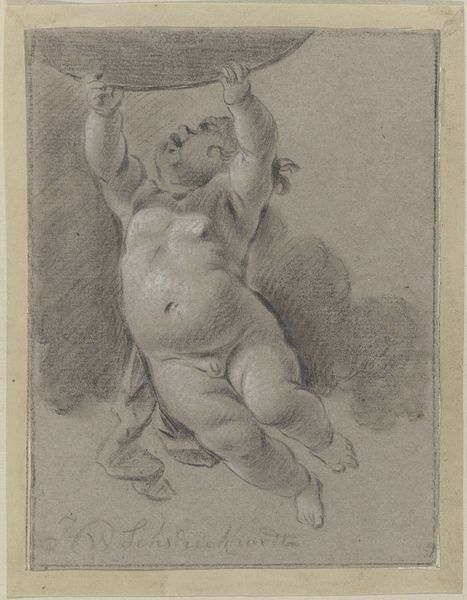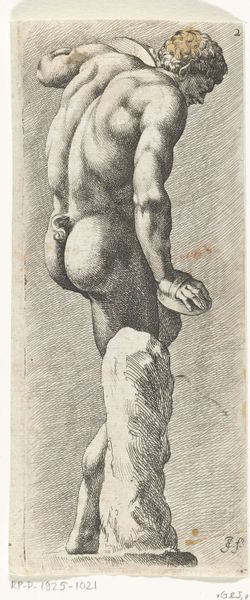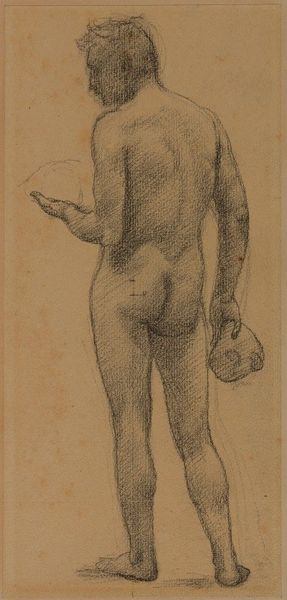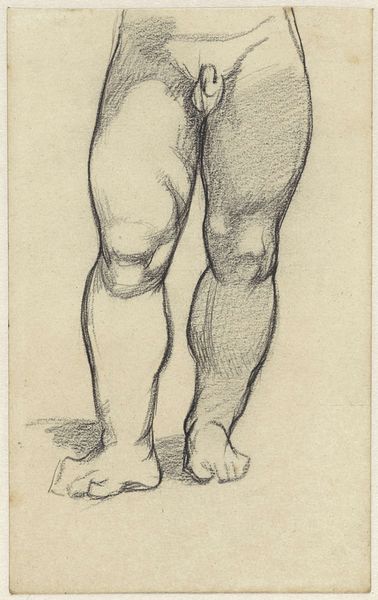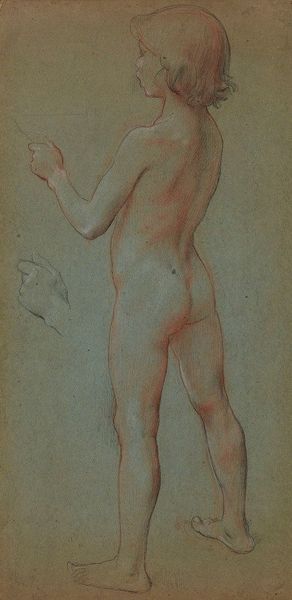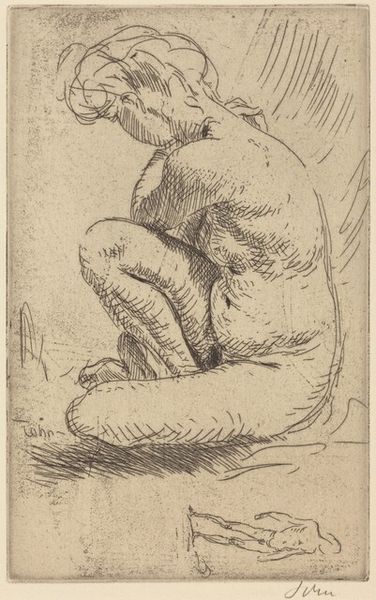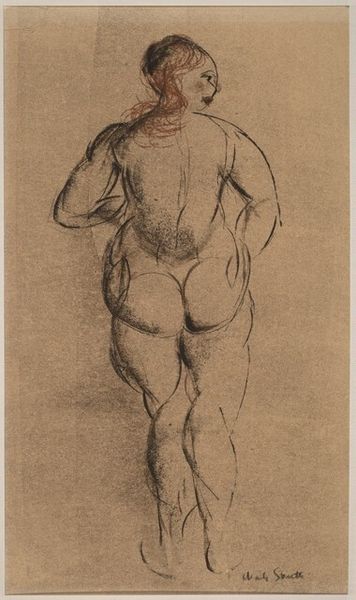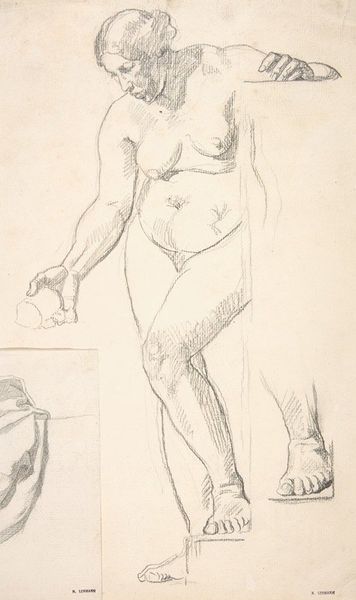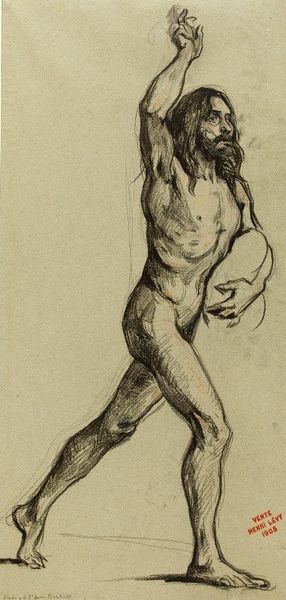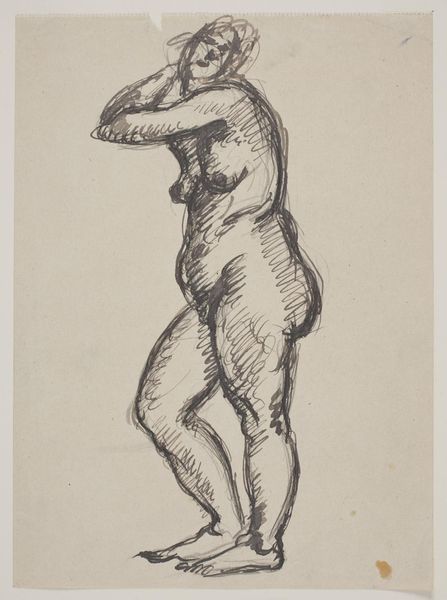
drawing, charcoal
#
drawing
#
charcoal drawing
#
figuration
#
11_renaissance
#
charcoal
#
academic-art
#
nude
Dimensions: height 270 mm, width 305 mm
Copyright: Rijks Museum: Open Domain
This is Giacomo Cavedone’s "Studie van een zwevende putto," a chalk drawing rendering of a cherubic figure, likely created sometime in the early 17th century. Consider how Cavedone’s artistic choices were shaped by the religious and cultural expectations of his time. As an artist deeply rooted in the Catholic tradition, Cavedone would have been influenced by the church's aesthetic preferences and its emphasis on conveying religious narratives through art. The cherub was a common artistic symbol. It represented spiritual innocence and divine love. The cherub was deployed as a figure that could navigate both the earthly and the divine. The intimate nature of the chalk drawing allows us to see the artist's hand at work. There is something very moving about the softness of the chalk as it renders the baby’s soft, chubby flesh. Are we invited into a world where the divine is expressed through the human or the human through the divine? The study invites us to meditate on the complex relationship between earthly existence and spiritual transcendence.
Comments
No comments
Be the first to comment and join the conversation on the ultimate creative platform.

